Begonia Pearcei, a captivating member of the begonia family, is a botanical delight for plant enthusiasts. This perennial plant, commonly known as Pearce’s begonia, is renowned for its distinctive characteristics and vibrant appearance. With its origins rooted in the subtropical regions of Asia, specifically China and Vietnam, Begonia Pearcei has become a popular choice for indoor gardening.
Key Features:
- Leaves: The Begonia Pearcei showcases asymmetrical, angel-wing-shaped leaves that come in striking shades of green. The surface of the leaves is often adorned with intricate silver patterns, adding to its aesthetic appeal.
- Size: Typically, this begonia reaches a moderate height, making it suitable for various indoor settings. The compact size allows for easy placement on windowsills, tabletops, or as an attractive addition to larger plant arrangements.
- Flowers: While the main attraction lies in its foliage, Begonia Pearcei may produce clusters of delicate flowers. The blossoms, appearing in colors such as pink or white, add a touch of elegance to the plant.
- Maintenance: Known for its relatively low-maintenance nature, Begonia Pearcei is an excellent choice for both novice and experienced gardeners. Understanding its specific care requirements ensures the plant thrives and flourishes in your chosen environment.
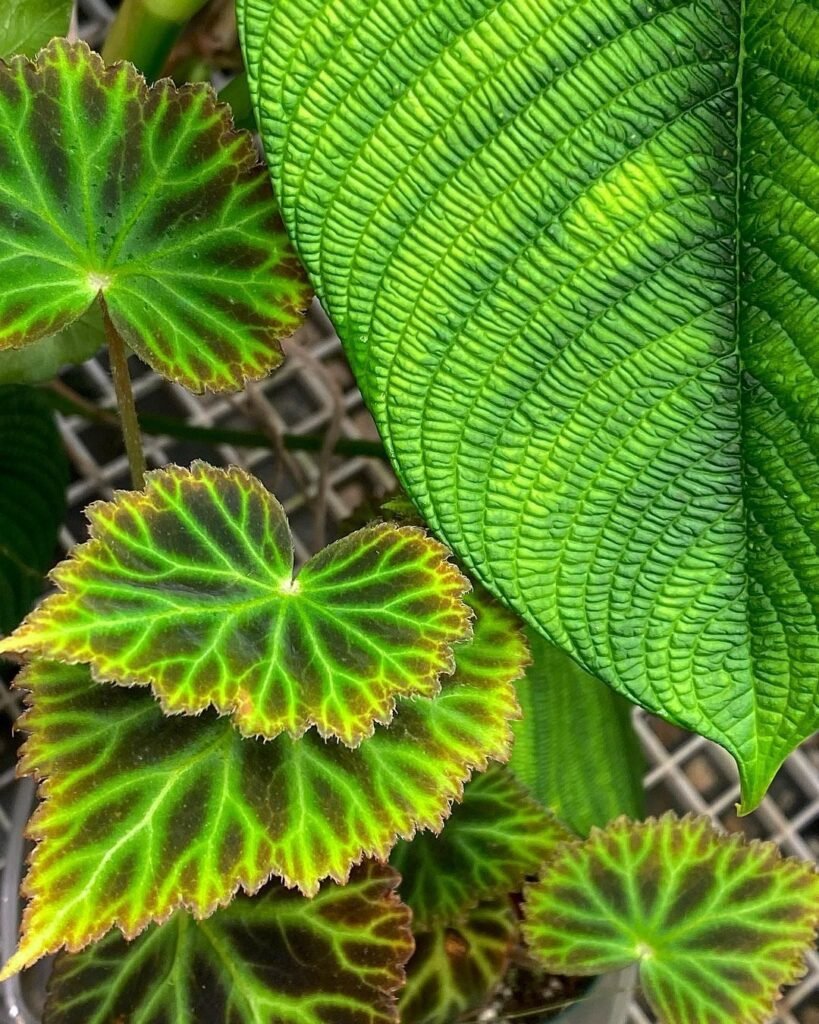
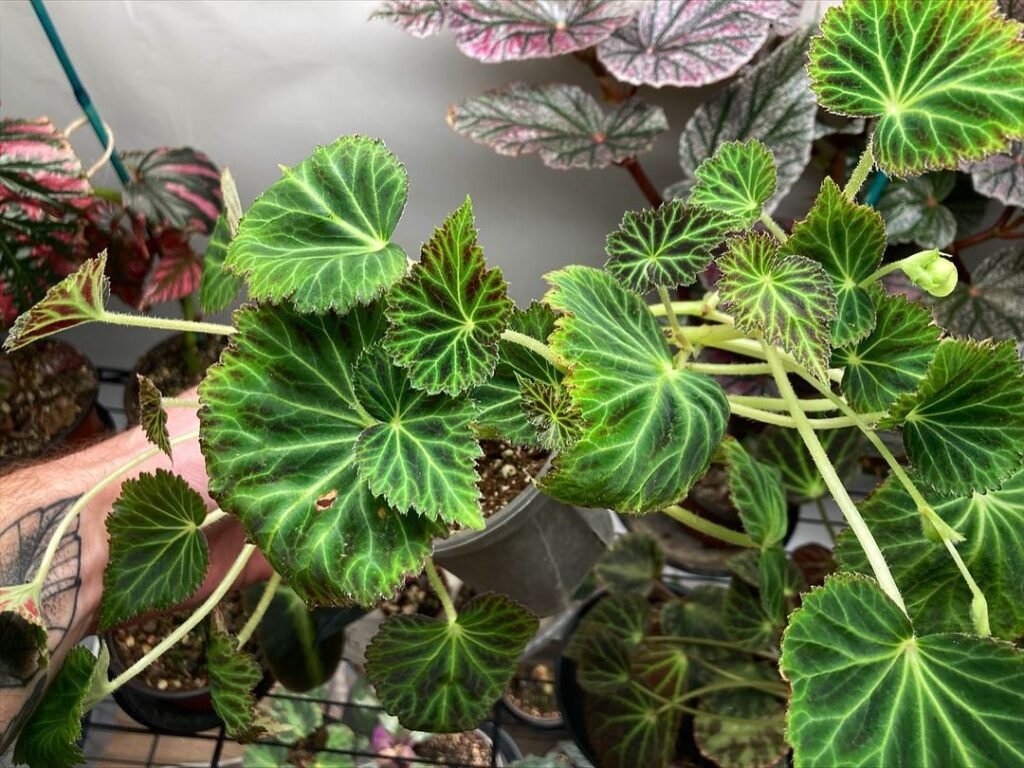
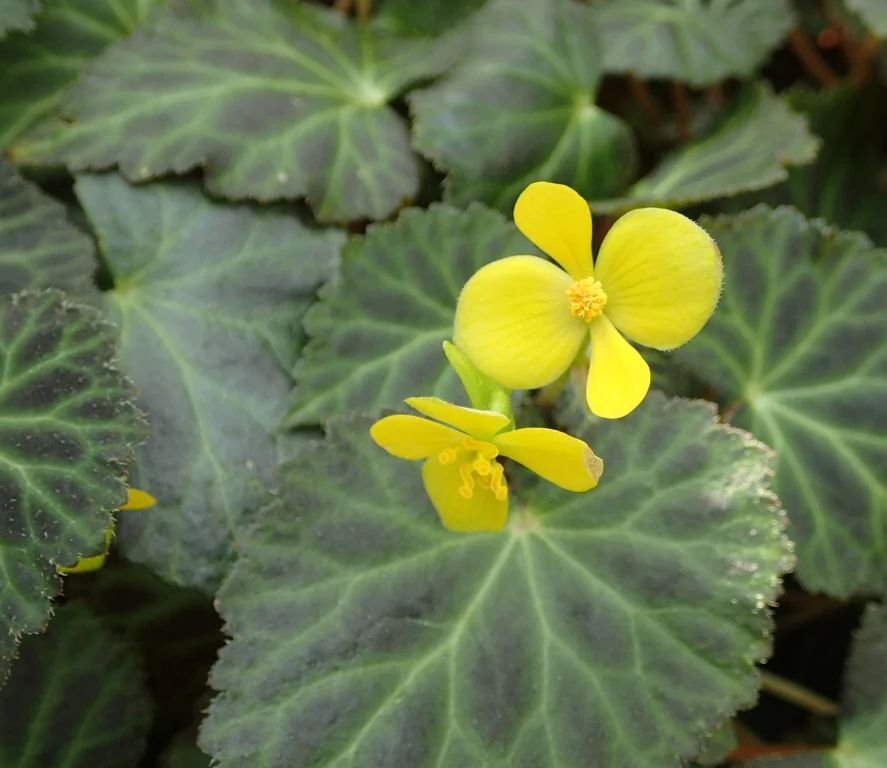
Begonia Pearcei Care Guide Overview
Embarking on a successful journey with Begonia Pearcei requires a well-rounded care guide. Here’s a quick overview to get you started:
| Care Aspect | Recommendations |
|---|---|
| Light Exposure | Moderate to bright, indirect light. Rotate for even growth. |
| Soil Requirements | Well-draining mix with perlite or sand. Keep soil consistently moist, not waterlogged. |
| Watering Schedule | Keep soil evenly moist. Water when the top inch is dry. Use a saucer to catch excess water. |
| Humidity and Temperature | Maintain high humidity. Keep temperature between 60-75°F (15-24°C). |
| Fertilizing Routine | Use balanced liquid fertilizer every 2-4 weeks during the growing season. Dilute for better results. |
| Pruning and Shaping | Prune for shape and size control. Pinch off tips for bushier growth. |
| Propagation Methods | Propagate through stem cuttings. Repot every 1-2 years. |
| Seasonal Care Tips | Adjust care for winter dormancy, provide enhanced light in spring and summer. |
| Companion Plants | Pair with ferns or peperomias. Group plants with similar care needs. |
| Pest Control Measures | Regularly inspect for mealybugs and spider mites. Maintain high humidity to deter pests. |
| Reviving a Sick Plant | Assess soil moisture, inspect for pests, and provide optimal growing conditions. |
Genus Species & Appearance
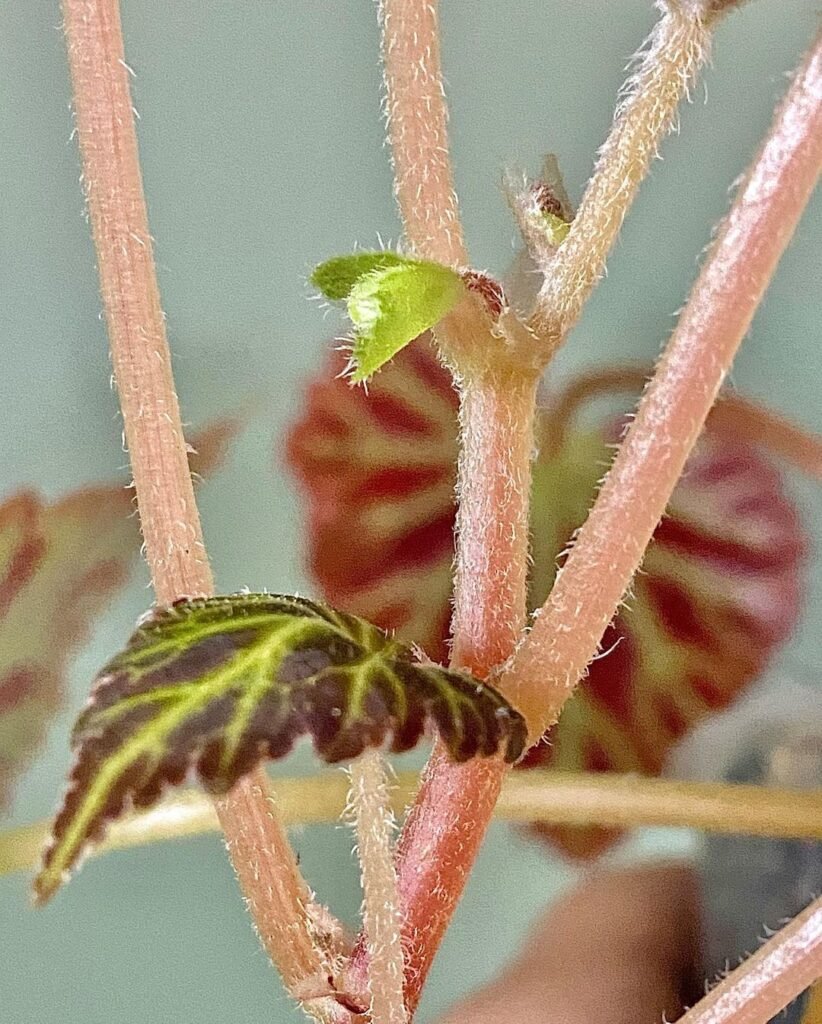

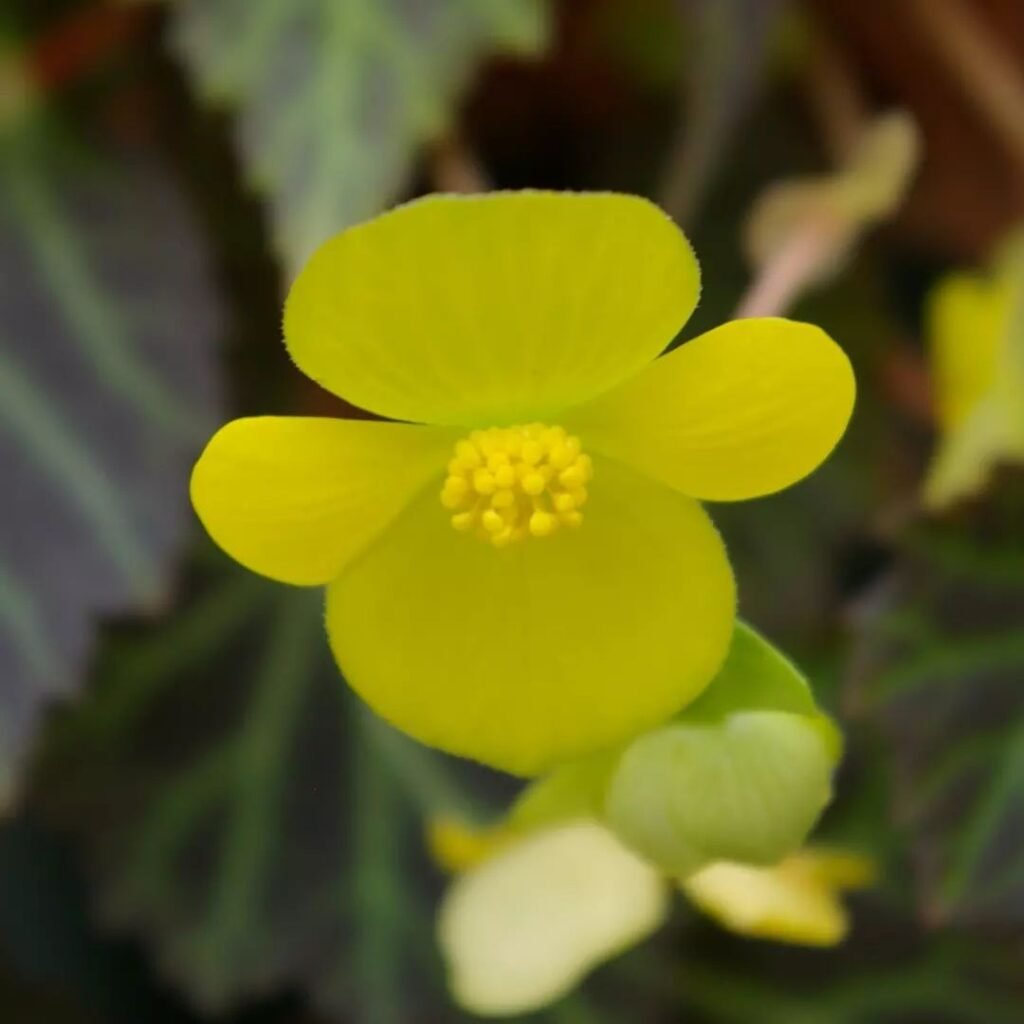
Genus and Species: Begonia Pearcei belongs to the vast and diverse genus of Begonia, with its specific epithet as “Pearcei.” The genus Begonia encompasses a wide array of species, each with its unique characteristics. Within this genus, Begonia Pearcei stands out for its captivating foliage and relatively compact growth habit.
Distinctive Appearance:
- Leaf Structure: The angel-wing-shaped leaves of Begonia Pearcei are asymmetrical, creating an eye-catching display. The surface of the leaves features intricate silver patterns, enhancing the plant’s visual allure.
- Color Palette: The predominant color of the leaves is a lush green, serving as a backdrop for the silver patterns. The combination of green and silver lends a touch of elegance to Begonia Pearcei.
- Size and Growth Habit: Begonia Pearcei typically attains a moderate height, making it suitable for indoor cultivation. The compact growth habit allows for versatile placement, whether on tabletops, shelves, or as part of a larger plant ensemble.
Not the plant for you? Check out my full list of 78 Types of Begonia!
Begonia Pearcei Light and Soil Requirements
Light Exposure: Begonia Pearcei thrives in moderate to bright, indirect light. While it appreciates ample light, direct sunlight can be detrimental, potentially scorching the leaves. A well-lit spot, such as near an east or west-facing window, is ideal. To ensure even growth, periodically rotate the plant, allowing all sides to receive adequate light.
Soil Requirements: Optimal soil conditions are crucial for the well-being of Begonia Pearcei. Choose a well-draining, lightweight potting mix designed for orchids or African violets. The mix should retain moisture without becoming waterlogged. Incorporating perlite or sand into the soil enhances drainage, preventing root rot. Regularly check the moisture levels, watering when the top inch of soil feels dry.
Care Tip: For an extra boost, consider adding a diluted, balanced liquid fertilizer during the growing season to support the plant’s nutrient needs.
Watering Begonia Pearcei

Maintaining the right balance in watering is key to the success of Begonia Pearcei.
Watering Schedule: Keep the soil evenly moist, and water when the top inch feels dry to the touch. Using a saucer beneath the pot can help catch excess water, preventing waterlogged conditions that may lead to root rot. Take caution not to overwater, as Begonia Pearcei is sensitive to excessively wet conditions.
Humidity and Temperature: High humidity levels are essential for Begonia Pearcei’s well-being. Create a humidity-rich environment, especially during the drier months. Grouping plants together or using a humidifier can effectively elevate humidity levels. Maintain a temperature range between 60-75°F (15-24°C), avoiding drafts and sudden temperature fluctuations.
Care Tip: During winter, when indoor heating can reduce humidity, misting the plant occasionally can help maintain an optimal environment.
Begonia Pearcei Humidity and Temperature
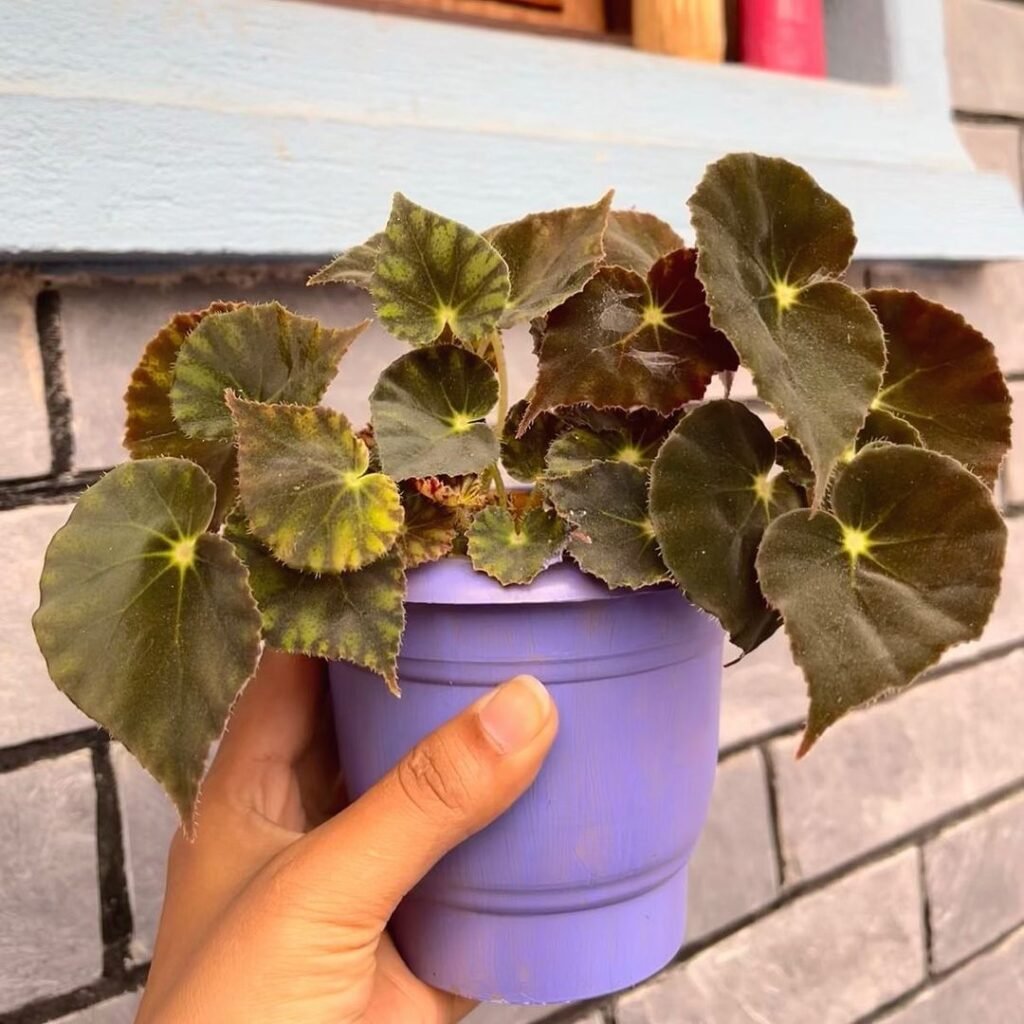
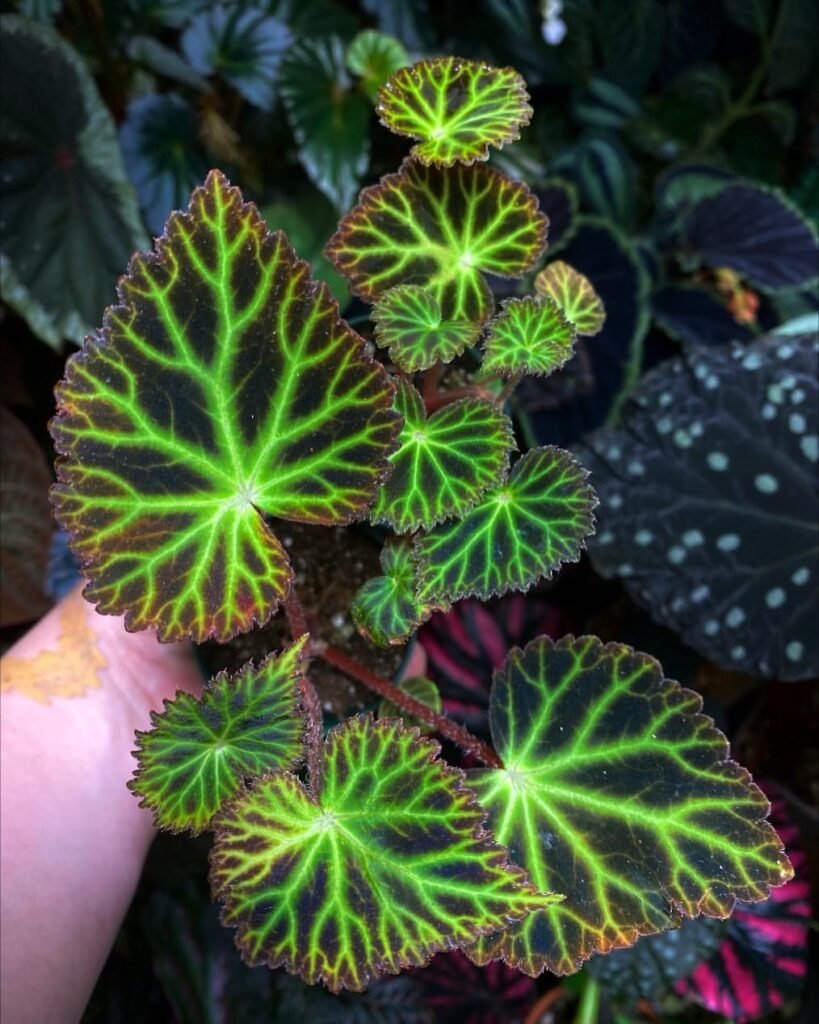
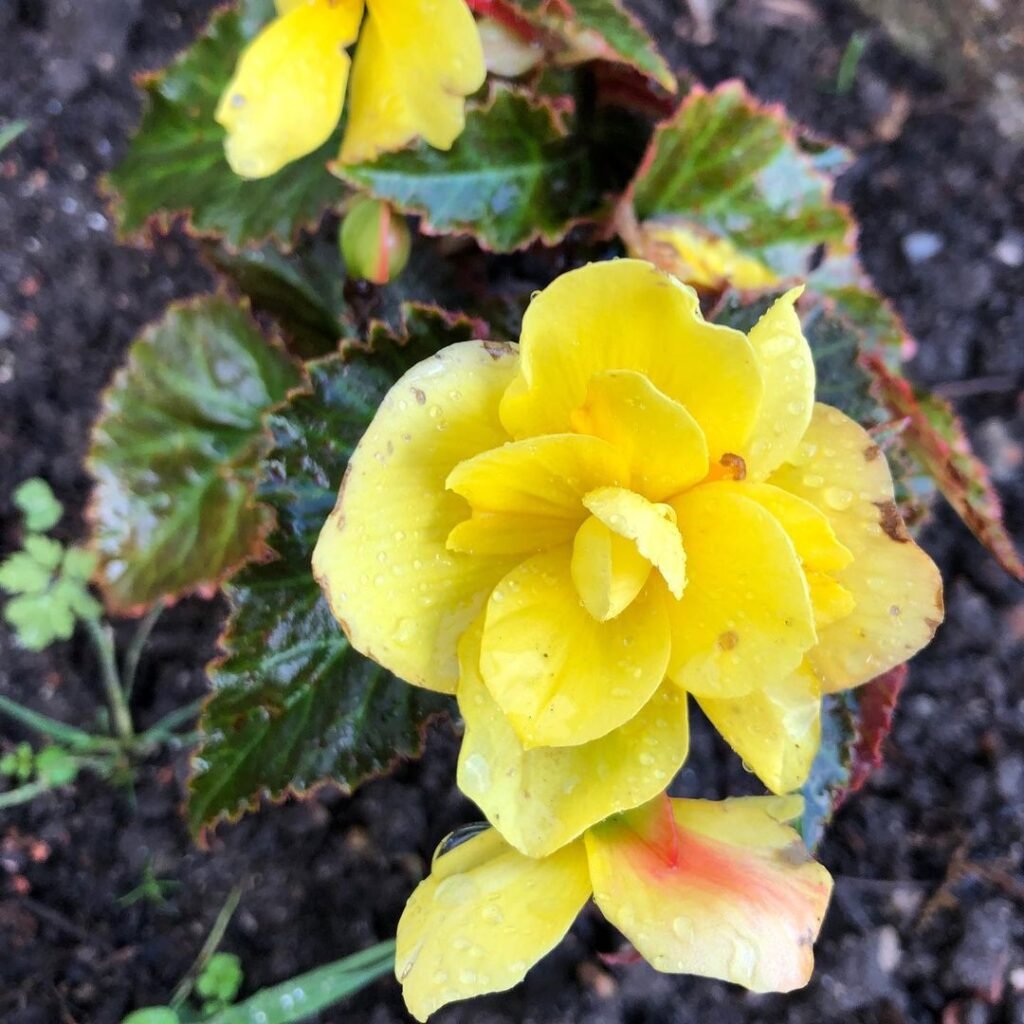
Creating a suitable microclimate for Begonia Pearcei involves careful consideration of humidity and temperature.
Maintaining Humidity: Begonia Pearcei thrives in high humidity conditions. To achieve this, consider grouping plants together or placing the pot on a tray filled with water and pebbles. Additionally, using a humidifier in the vicinity can create an ideal microclimate. Regularly misting the plant, especially during dry spells, further enhances humidity.
Temperature Range: Maintain a temperature range between 60-75°F (15-24°C). This subtropical plant favors moderately warm conditions. Protect it from sudden temperature fluctuations, and avoid exposing it to cold drafts. During colder months, ensure the plant is shielded from chilly air, as it may be sensitive to low temperatures.
Care Tip: To combat dry indoor conditions, consider placing a small humidifying tray near Begonia Pearcei, filled with water and surrounded by pebbles.
Fertilizing Begonia Pearcei
Fertilizing Routine: Fertilizing Begonia Pearcei is a key aspect of its care regimen. Utilize a balanced liquid fertilizer during the growing season, typically in spring and summer. Feed the plant every 2-4 weeks to provide essential nutrients for healthy growth. It’s advisable to dilute the fertilizer to half the recommended strength to prevent over-fertilization, which can be detrimental to the plant.
Application Method: Apply the diluted fertilizer to the soil around the plant, avoiding direct contact with the leaves. This ensures a gradual release of nutrients as the plant absorbs them through the root system. Regular fertilization supports the development of vibrant foliage and encourages flowering, enhancing the overall aesthetic appeal of Begonia Pearcei.
Begonia Pearcei Pruning and Shaping

Pruning for Shape and Size Control: Pruning is an essential aspect of maintaining the desired shape and size of Begonia Pearcei. Prune leggy stems and remove dead or yellowing leaves to promote a compact and bushy growth habit. Regular pruning not only enhances the plant’s aesthetic appeal but also improves air circulation, reducing the risk of fungal issues.
Pinching Tips for Bushier Growth: To encourage bushier growth, pinch off the tips of the stems. This simple technique redirects the plant’s energy, resulting in the development of additional lateral shoots. This not only contributes to a fuller appearance but also stimulates the production of more leaves, enhancing Begonia Pearcei’s overall vitality.
Begonia Pearcei Propagation and Repotting
Propagation through Stem Cuttings: Begonia Pearcei is easily propagated through stem cuttings. Select healthy stems, around 4-6 inches in length, and ensure each cutting has at least two leaves. Dip the cut end in rooting hormone to encourage root development. Plant the cuttings in a well-draining mix and keep them in a warm, humid environment until roots establish.
Repotting Frequency: The frequency of repotting depends on the growth of Begonia Pearcei. Repot every 1-2 years, preferably in spring when the plant enters a new growth phase. Choose a slightly larger pot with fresh potting mix. Carefully lift the plant from its current container, ensuring the delicate roots are handled gently to avoid damage.
Table: Common Liquid Fertilizers for Begonia Pearcei
| Brand | N-P-K Ratio | Application Frequency | Special Considerations |
|---|---|---|---|
| Miracle-Gro | 24-8-16 | Every 2 weeks | Well-suited for general-purpose feeding. |
| Osmocote | 14-14-14 | Once a month | Slow-release granules for long-lasting nutrition. |
| Jack’s Classic | 20-20-20 | Every 3-4 weeks | Contains micronutrients for comprehensive plant health. |
Care Tip: When repotting, inspect the roots for any signs of rot or disease. Trim away any damaged roots and treat with a fungicide if necessary before transplanting into the new pot.
Begonia Pearcei Seasonal Care
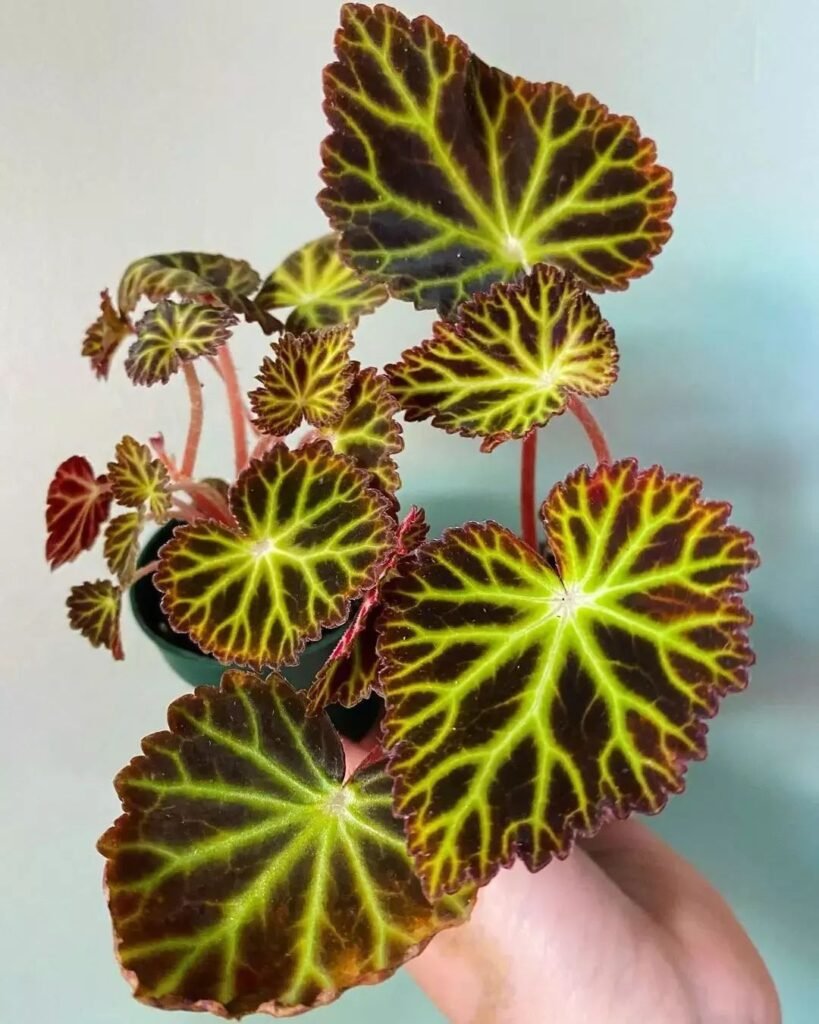
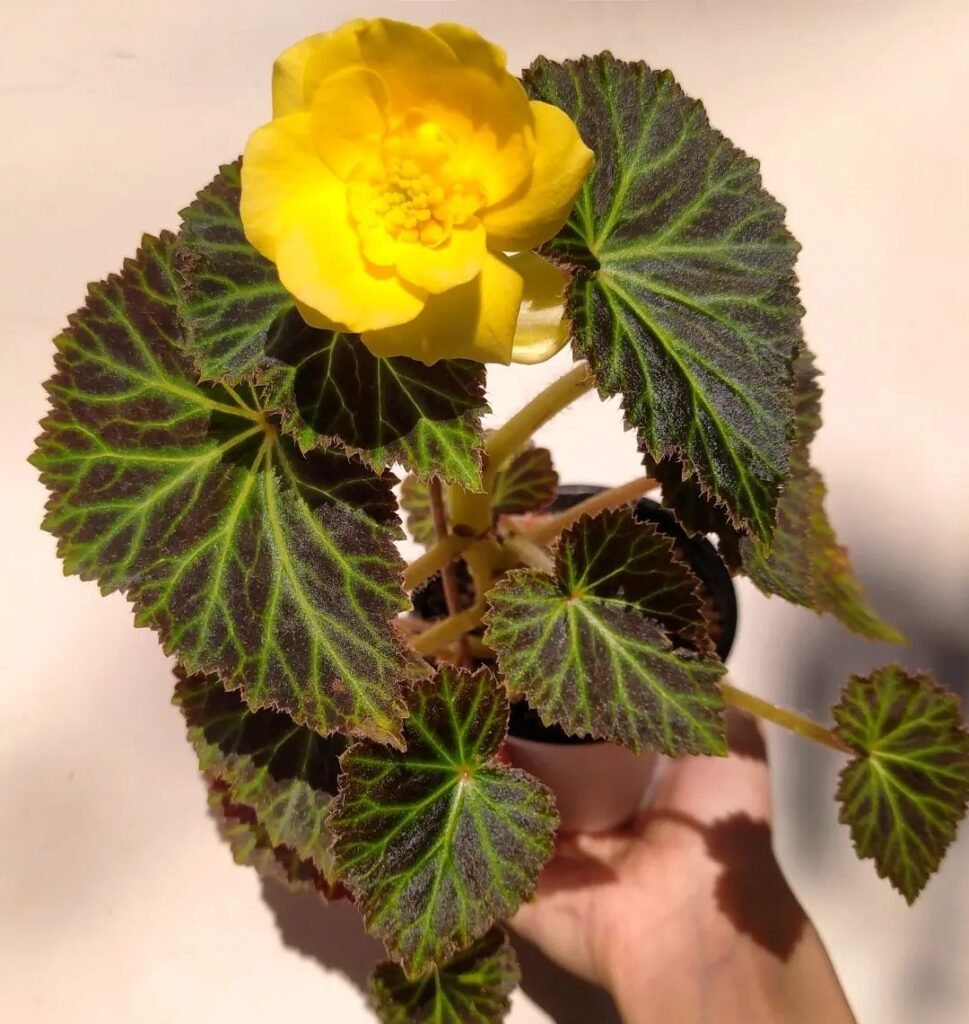
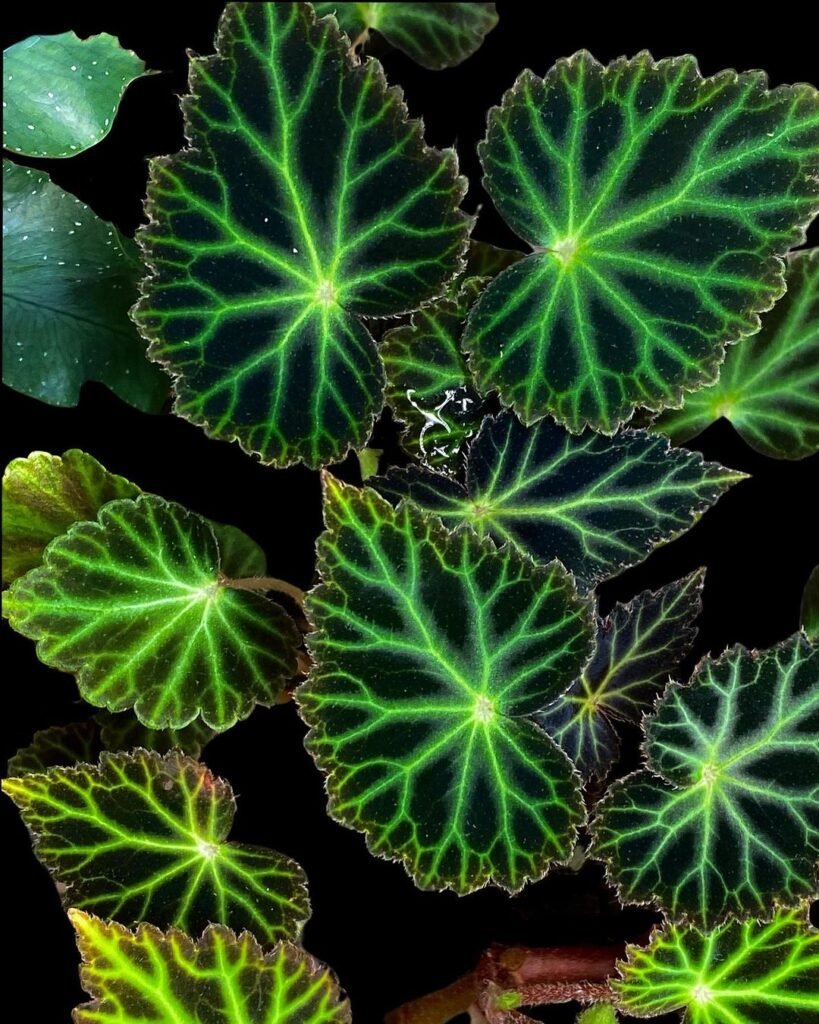
Adjusting care routines according to seasonal changes is crucial for the well-being of Begonia Pearcei.
Winter Care
Reduced Watering Frequency: During the winter months, reduce watering frequency as the plant’s growth slows down. Allow the top inch of the soil to dry out between waterings. Be cautious not to overwater, as this can lead to root rot in cooler and less active periods.
Increased Humidity: Indoor heating systems can reduce humidity levels during winter. Counteract this by increasing humidity around Begonia Pearcei. Grouping plants together, using a humidifier, or placing a tray of water and pebbles nearby can help maintain an ideal environment.
Protection from Drafts: Begonia Pearcei is sensitive to drafts, and exposure to cold air can harm the plant. Protect the plant from drafts by placing it away from windows or doors that may let in chilly air. Creating a stable and warmer microclimate is essential for its winter survival.
Spring and Summer Care
Enhanced Light Exposure: As the days lengthen during spring and summer, provide enhanced light exposure for Begonia Pearcei. Move the plant to a brighter location with indirect sunlight. If outdoor conditions permit, a shaded spot in the garden can also be suitable.
Regular Fertilization: During the active growing season, regularly fertilize the plant to support its increased nutrient requirements. Continue with a balanced liquid fertilizer, applying it every 2-4 weeks. Ensure the soil is adequately moist but not waterlogged.
Monitoring for Pests: Warmer months often bring an increase in pest activity. Monitor for pests regularly, paying close attention to the undersides of leaves where they may hide. Swift action, such as wiping leaves with a damp cloth or using insecticidal soap, can prevent infestations from escalating.
Table: Seasonal Care Checklist for Begonia Pearcei
| Season | Care Aspects |
|---|---|
| Winter | – Reduce watering frequency |
| – Increase humidity levels | |
| – Protect from drafts | |
| Spring | – Provide enhanced light exposure |
| – Regularly fertilize | |
| – Monitor for pests | |
| Summer | – Ensure adequate light exposure |
| – Continue regular fertilization | |
| – Maintain vigilant pest control |
Care Tip: Consistent care adjustments throughout the seasons ensure Begonia Pearcei thrives in the changing conditions.
Begonia Pearcei Companion Plants
Choosing suitable companion plants enhances the visual appeal and well-being of Begonia Pearcei.
Suitable Companions
Ferns: Ferns make excellent companions for Begonia Pearcei due to their similar moisture and light requirements. The lush, feathery foliage of ferns complements the unique leaves of Begonia Pearcei, creating an aesthetically pleasing arrangement.
Peperomias: Peperomias are another ideal companion. These plants share a preference for moderate light and well-draining soil. The diverse leaf shapes and patterns of peperomias can contrast beautifully with Begonia Pearcei, adding visual interest to your plant display.
Table: Potential Companion Plants for Begonia Pearcei
| Companion Plant | Care Requirements |
|---|---|
| Ferns | – Moderate to high humidity |
| – Indirect light, no direct sunlight | |
| – Well-draining soil | |
| Peperomias | – Moderate light exposure |
| – Well-draining soil | |
| – Allow soil to partially dry between waterings |
If you’re thinking of extending your begonia plant family, read up on begonia nelumbiifolia care and begonia sarawak care to help you decide on the next addition to your squad.
Care Tip: Grouping plants with similar care needs simplifies maintenance and ensures a harmonious coexistence.
Pest Control Tips for Begonia Pearcei
Preventing and managing pest infestations is crucial for the health of Begonia Pearcei.
Common Pests
Mealybugs: Mealybugs are a common threat to Begonia Pearcei. Inspect the plant regularly, paying attention to leaf joints and undersides. If detected, wipe them off with a cotton swab dipped in rubbing alcohol or use insecticidal soap.
Spider Mites: Spider mites can thrive in dry conditions. Maintain high humidity to deter them, and if an infestation occurs, use a strong spray of water to dislodge them. In severe cases, insecticidal soap or neem oil can be effective.
| Pest Type | Prevention and Management |
|---|---|
| Mealybugs | – Regularly inspect leaves and joints. |
| – Wipe off mealybugs with rubbing alcohol. | |
| – Use insecticidal soap for severe infestations. | |
| Spider Mites | – Maintain high humidity. |
| – Spray with water to dislodge mites. | |
| – Use insecticidal soap or neem oil for severe infestations. |
Care Tip: Early detection and swift action are crucial for effective pest control. Regularly inspecting your plant helps prevent infestations from becoming overwhelming.
Reviving a Sick or Wilting Begonia Pearcei
Identifying the cause of a sick or wilting Begonia Pearcei is crucial for nursing it back to health.
Diagnosis and Recovery
Assess the Soil Moisture: Check the soil moisture levels to determine if overwatering or underwatering is the culprit. Adjust the watering frequency accordingly. If the soil is consistently wet, reduce watering, and if it’s dry, increase the frequency. Ensuring the right balance is essential for the plant’s recovery.
Inspect for Pests and Diseases: Thoroughly inspect the plant for pests and diseases. Mealybugs and spider mites can often be the cause of decline. If detected, take prompt action using appropriate control measures, such as wiping with a damp cloth or applying insecticidal soap. Treat any underlying diseases with fungicides as needed.
Provide Optimal Conditions: Once the issues are identified and addressed, provide optimal growing conditions. Ensure the plant is placed in an environment with suitable light, humidity, and temperature levels. Consider moving it to a more favorable location if necessary.
Care Tip: When reviving a sick Begonia Pearcei, patience is key. Changes in condition and recovery may take time, so closely monitor the plant’s response to adjustments in care.
Conclusion
Begonia Pearcei, with its unique foliage and manageable care requirements, is a delightful addition to any indoor plant collection.
In conclusion, understanding its distinctive characteristics, providing tailored care, and adapting to seasonal changes are key to fostering a thriving Begonia Pearcei. With attention to detail and a commitment to its well-being, this begonia variety rewards enthusiasts with lush foliage and occasional delicate blooms.
FAQs
How often should I fertilize Begonia Pearcei?
Fertilize Begonia Pearcei every 2-4 weeks during the growing season (spring and summer). Use a balanced liquid fertilizer, diluted to half the recommended strength, to avoid over-fertilization. Refrain from fertilizing during the dormant period in fall and winter.
Can Begonia Pearcei tolerate direct sunlight?
No, Begonia Pearcei prefers moderate to bright, indirect light. Direct sunlight can scorch its leaves, so it’s best placed in a well-lit spot away from direct sun exposure.
Why are the leaves of my Begonia Pearcei turning yellow?
Yellowing leaves can indicate various issues, including overwatering, underwatering, or nutrient deficiencies. Check the soil moisture, adjust watering accordingly, and ensure the plant receives proper nutrients through regular fertilization. If the issue persists, inspect for pests or diseases.

Writer/Green Thumb/Explorer – Rooted deep in the rich soils of Devon, I’ve cultivated a vast expertise in plant care, helping greenery thrive in homes across the UK. When I’m not crafting detailed plant care guides, I’m journeying through the lush landscapes of the West Country, unearthing nature’s secrets and sharing them with fellow plant enthusiasts. Every leaf has a story, and I’m here to tell it.





